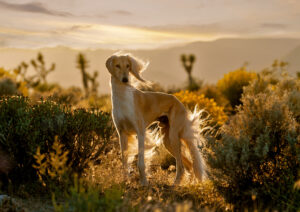Introduction
As a commercial photographer, I often encounter both creative and logistical challenges during a production. A many of you know Generative Fill in Photoshop has been a gamechanger for productivity. We are starting to use it in other ways that may not seem quite so obvious.
Preshoot Creative Flow
Every creative has their own way of bringing ideas to life. It could involve brainstorming with a team, quietly reflecting before sleep, or having that classic “aha” moment in the shower. Now, with AI, we are turning some of those fleeting thoughts into visual realities almost instantly.
We often draw inspiration from the work of others—whether from within their own industry or from other artistic disciplines. AI in photography acts as a powerful tool by offering us access to the collective works of countless creatives, helping us explore new directions and imagine what we can create. This isn’t about copying others or violating copyright; instead, it serves as an assist too broaden our minds to what might be possible.
Throughout history, artists have always drawn inspiration from other’s that came before them. Whether through replication, homage, or even innovation, we often build upon the foundations laid by brilliant and creative minds. AI becomes a tool to compile the best of this creative genius, allowing us to quickly explore vast collections of artistic works. It helps spark new ideas, making it easier and faster to translate inspiration into something fresh and original.
Our greenscreen studio gives us the best of both options—embracing AI technology while staying true to the roots of traditional photography. We’ve got a greenscreen cove right here in the studio, plus portable screens that let us take it all outside to shoot in the gorgeous natural light of our warehouse bay.
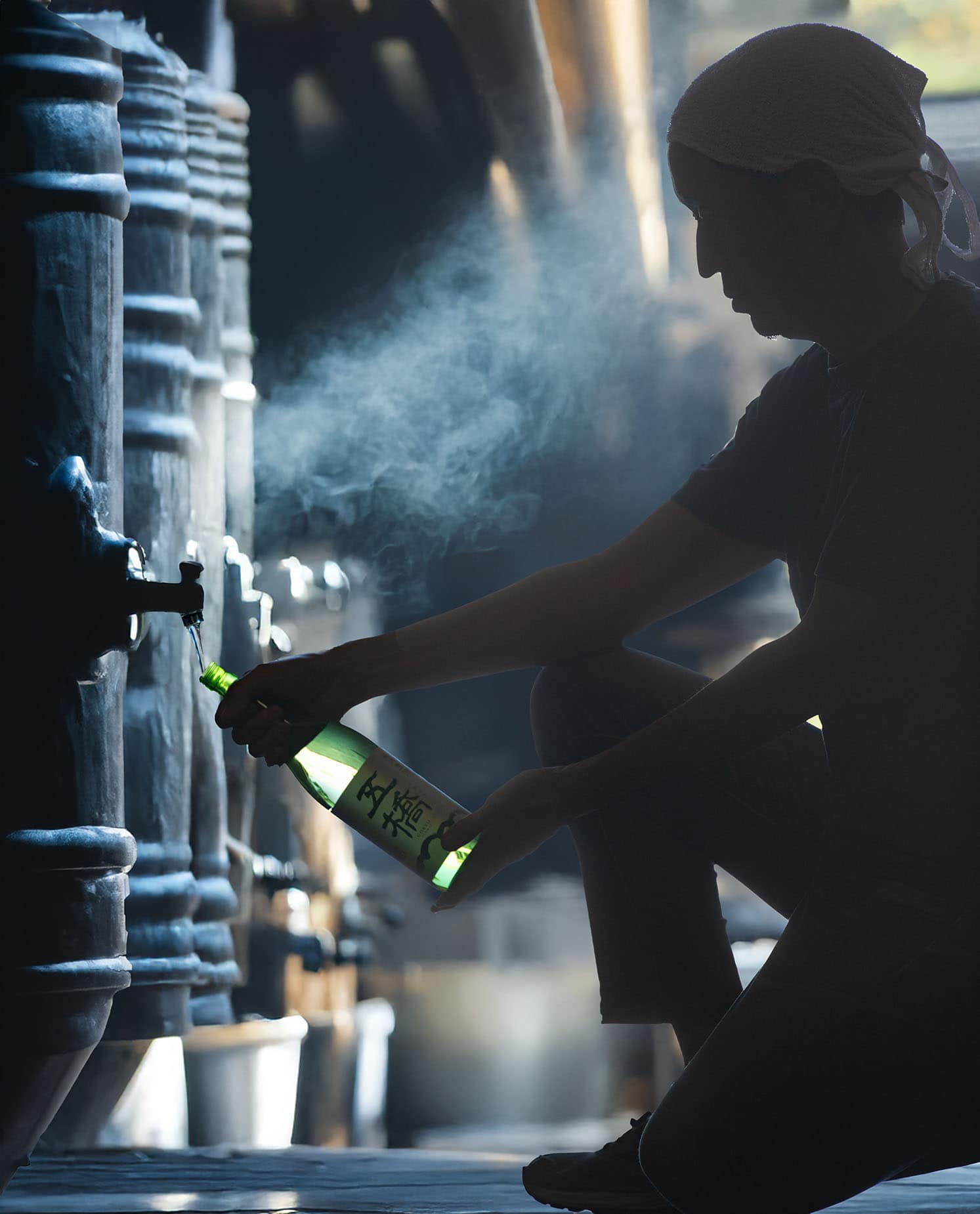
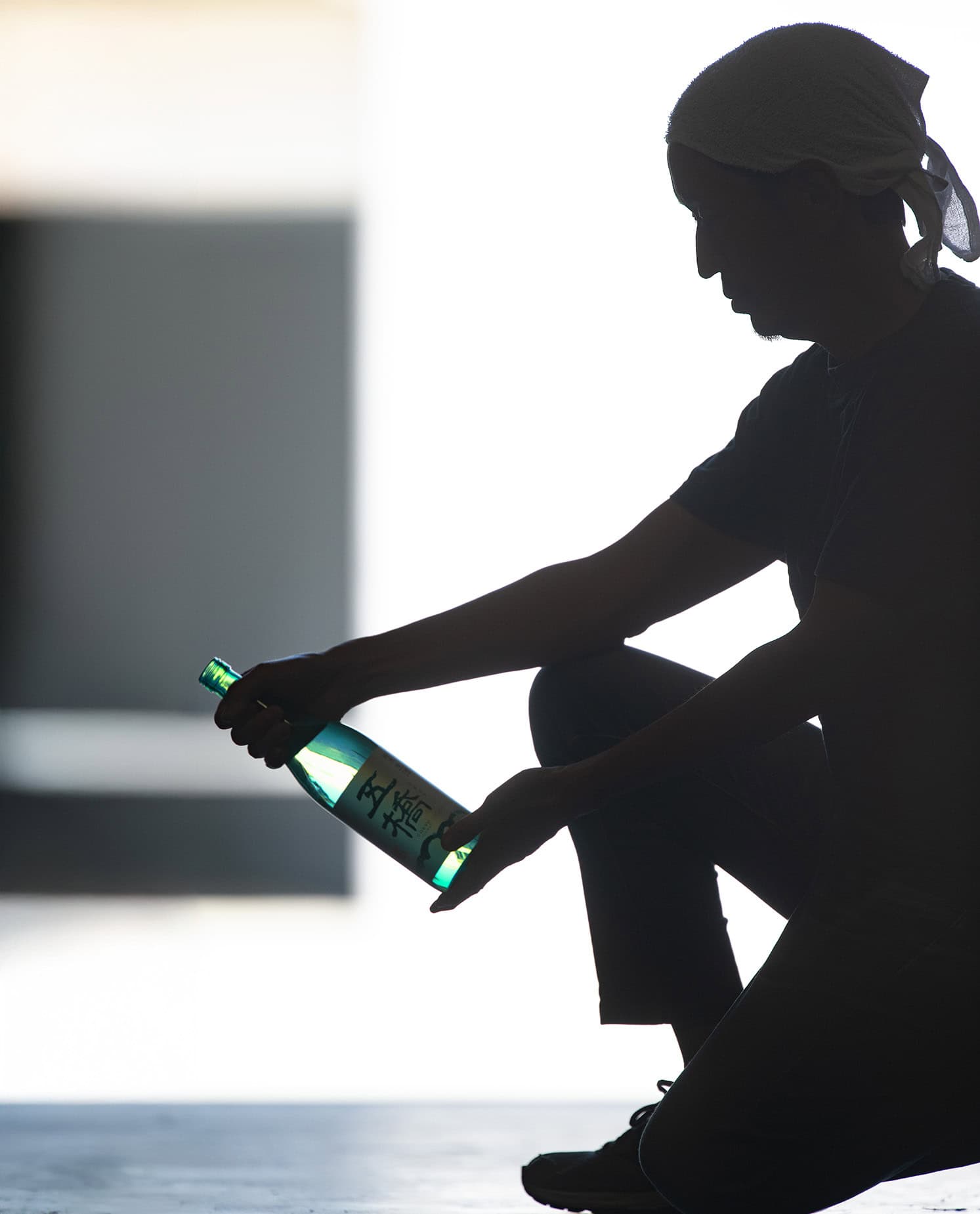
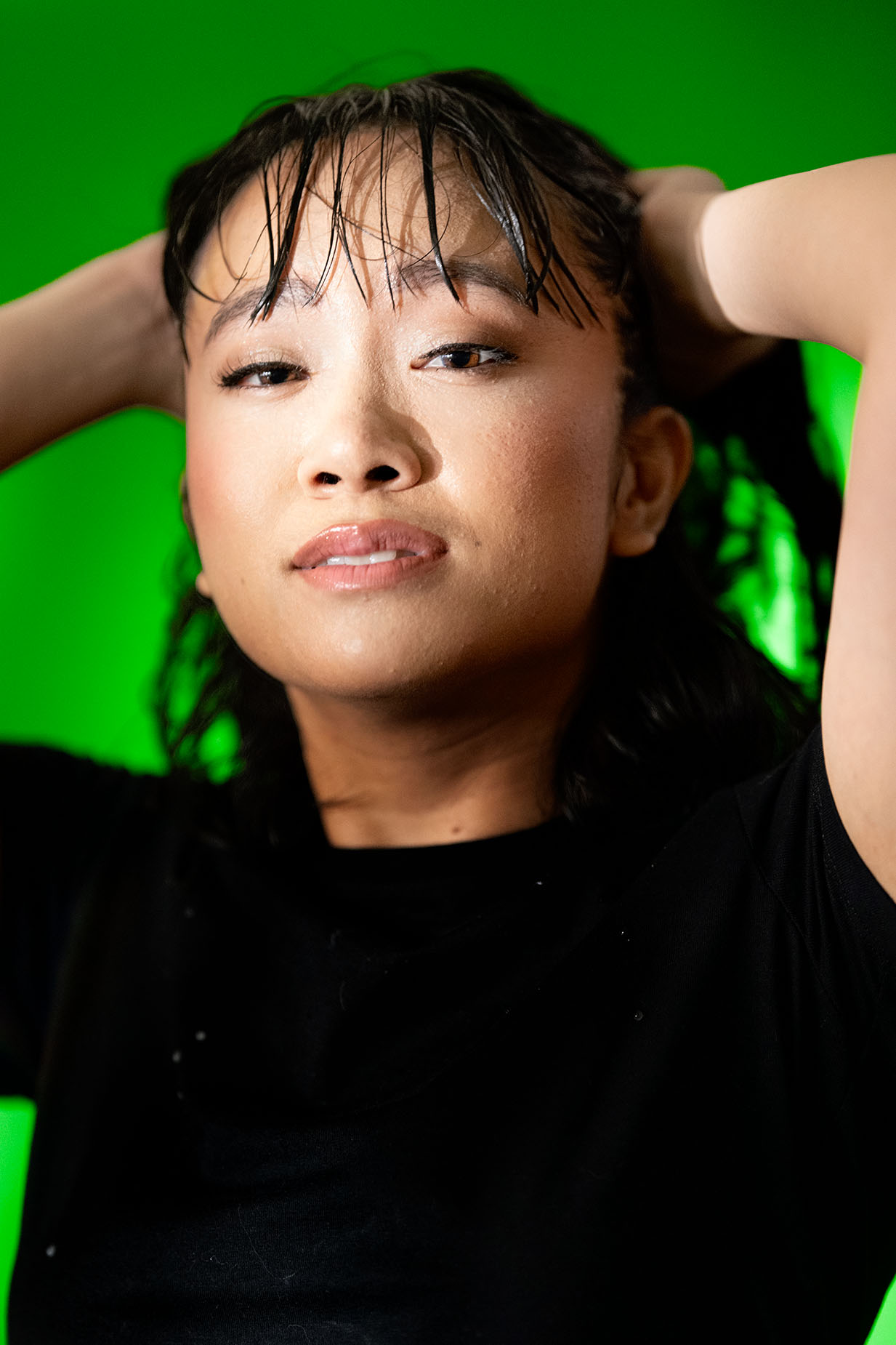
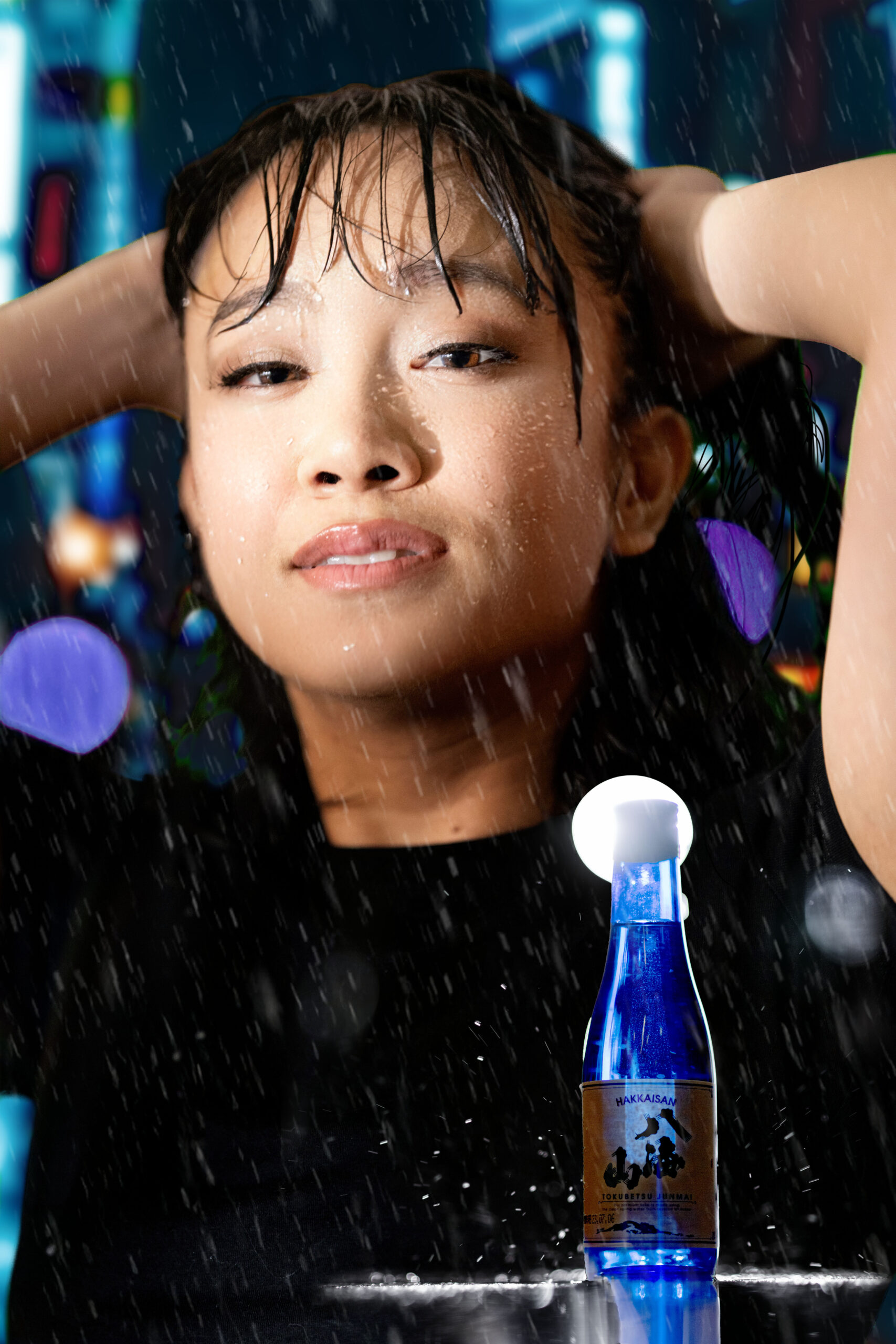
Greenscreens Aren’t Just for Backgrounds Anymore
I used to think of greenscreens as just a way to slap on a different background in post. But with AI in photography, greenscreens have become part of my photography toolkit. For example, AI can generate subtle depth and motion effects. Instead of a boring static scene, we can make it feel like the subject is in an environment that breathes—think rain in a city street or waves lapping at a shoreline. This allows us to take our greenscreen work beyond static visuals and one off stock backgrounds and into a higher more varied level of storytelling.
In the shot to the left we even worked with AI to produce the droplets on her skin without any photoshop actions.
Lighting Matching Made Easy with AI
Getting greenscreen shots to blend naturally used to drive me crazy—matching lighting was always hit-or-miss. But AI in photography changes the game for us. Now, AI tools help match everything—lighting angles, shadows, and even how the lens renders depth.
On the battlerope photoshoot to the right, we shot in the outside bay of our studio, where a lot of north light bounces around. AI was able to compensate for not only the overhead light but also the fill that was created from the light surfaces.
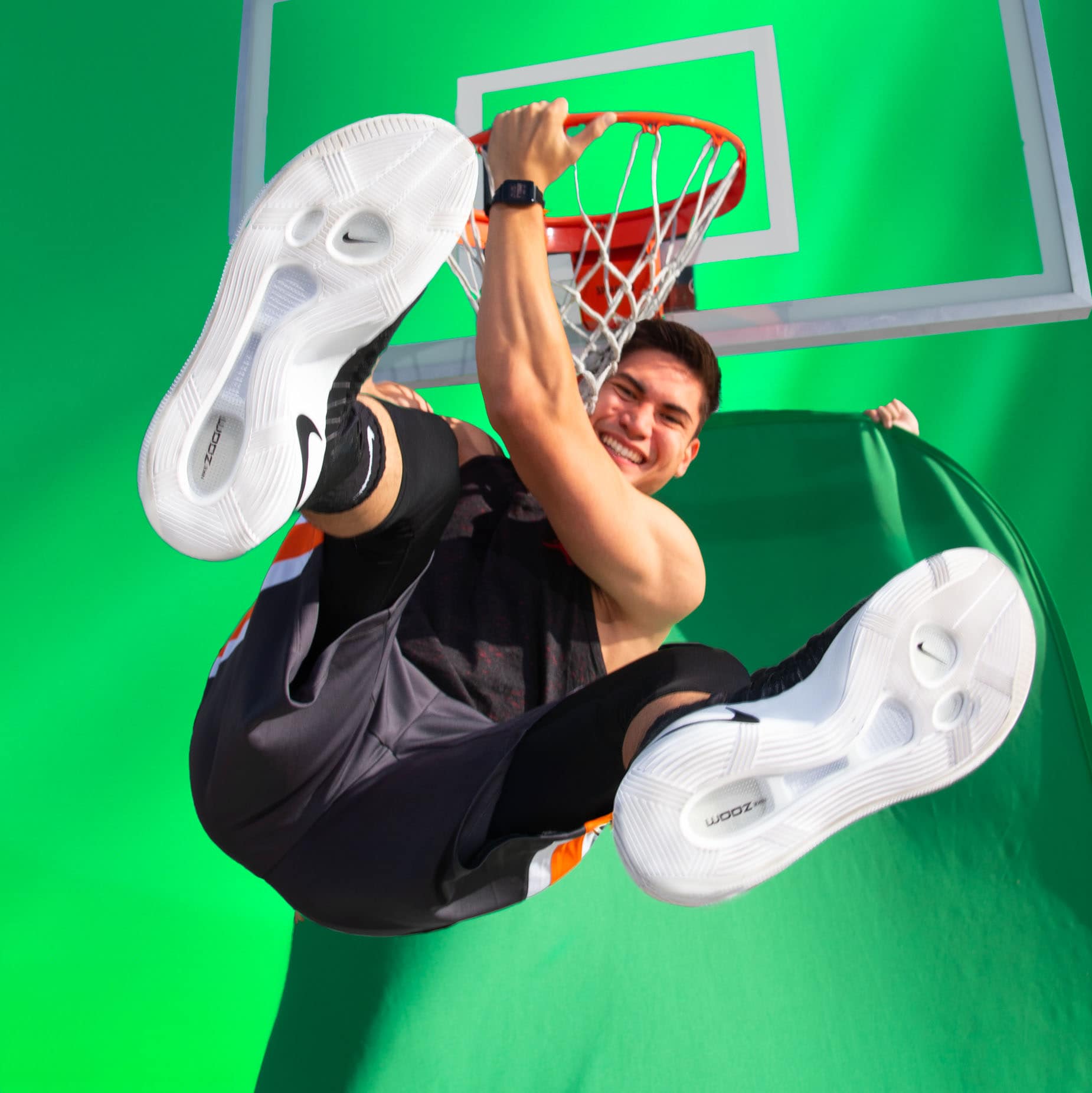
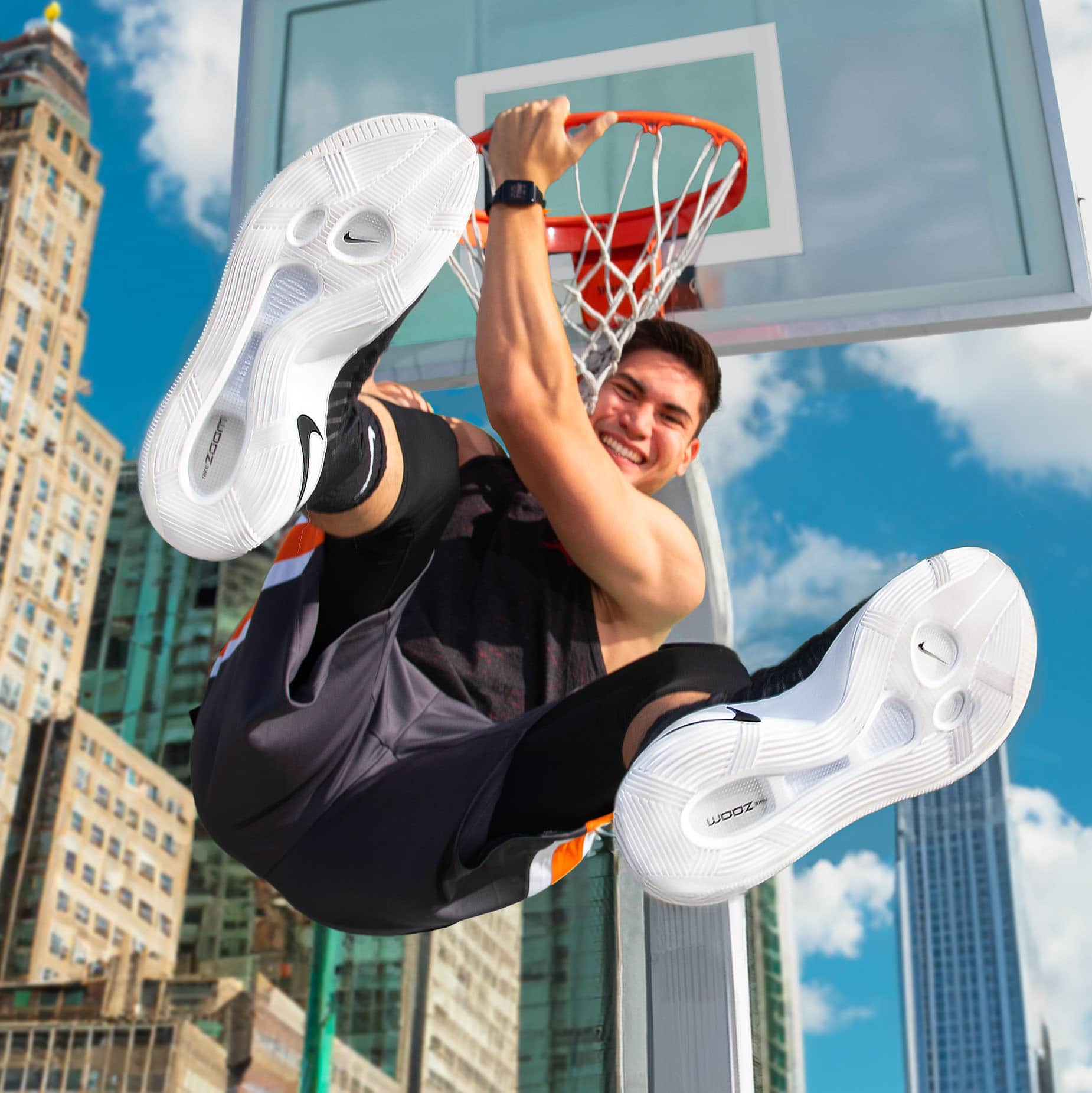
Matching Lens Data, Depth of Field, and Distortion with Generative Fill
One of the most impressive aspects of Adobe’s Generative Fill is how it analyzes and matches camera and lens data. This tool doesn’t just drop in a background; it ensures that elements align perfectly with the original image's technical settings. If you’ve ever struggled to match the shallow depth of field from a prime lens or replicate the subtle distortion of a wide-angle shot, you know how frustrating it can be.
Generative Fill solves this by analyzing the metadata from your camera and lens. It automatically adjusts depth, focus blur, and distortion to match the original shot. A recent example was the model at the top of this page. She was photographed at f/2.0 with a 200mm lens, which normally gives us that creamy background bokeh if not shot on greenscreen. When we added an AI-generated cityscape behind her, Generative Fill seamlessly replicated the same blur effect in the background. The result looked so natural that you’d swear it was shot on location.
Securing Rights with Greenscreen, Real Models, and Adobe Generative Fill
When working on commercial projects, ensuring we have the proper rights to use every element in our images is essential. This is where using greenscreens with real models—who’ve signed model releases—and licensed imagery from Adobe Generative Fill becomes a game-changer.
By shooting on greenscreens with professional models or actors who’ve granted permission through model releases, we eliminate the risk of legal complications down the line. Adobe Generative Fill is a powerful tool that fits seamlessly into this workflow. It allows us to incorporate AI-generated backgrounds and elements, knowing that they are licensed for commercial use. With both model releases and licensed AI content in place, every element in the final image is secure. This gives me peace of mind, especially when working on high-profile campaigns where legal scrutiny is higher.
Creating Multiple Versions for Market-Specific Campaigns
We can now rely more on an AI-driven workflow to easily generate content variations for different regions or markets. Adjusting colors, textures, and environmental elements can be done quickly without compromising the original vision, ensuring that our campaigns resonate across diverse audiences.
The image on the right was captured in the bay just outside our studio. Using Adobe's Generative Fill, we seamlessly created both seasonal and regional variations of the same shot.
Sometimes serendipitous moments happen.
Like when the trainer is restraining the dog a little too long and the shot is not exactly as planned. Generative Ai in this situation is a game changer. Normally this shot would have been edited out of the final shots for consideration. Generative fill allowed us to edit out the trainer with relative ease. With AI many more takes are salvageable and often are technically high res enough to give a solid final output.
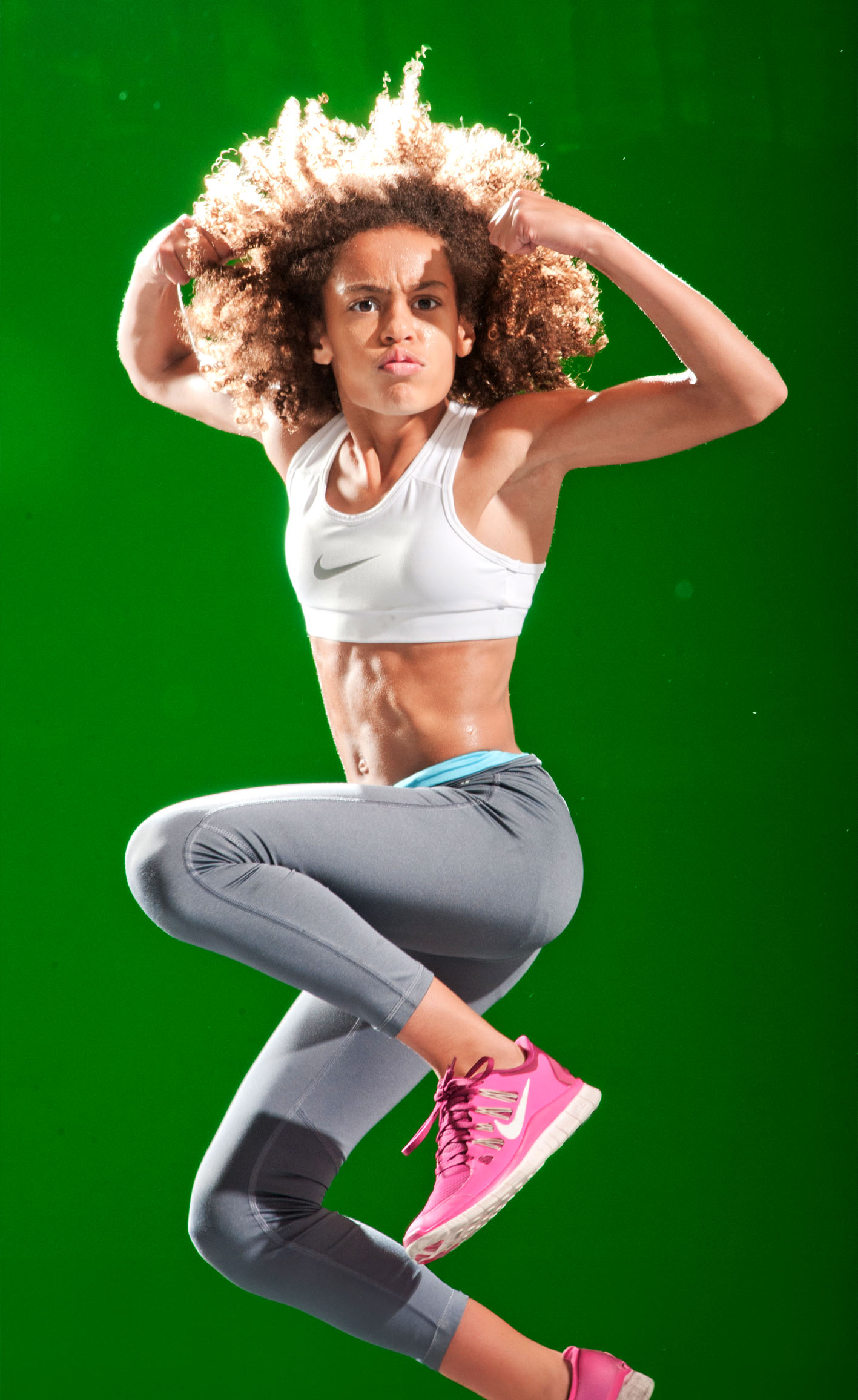

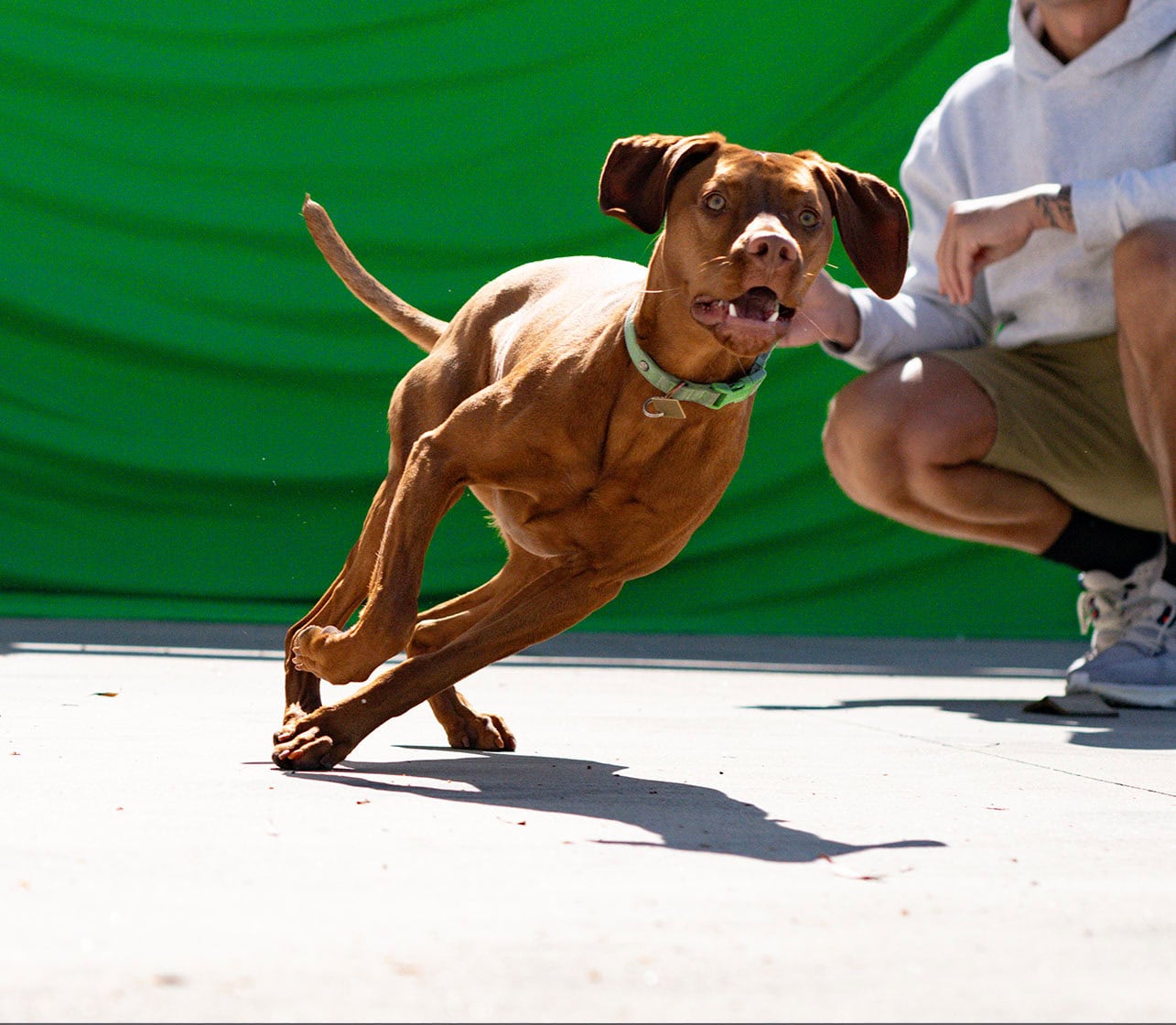
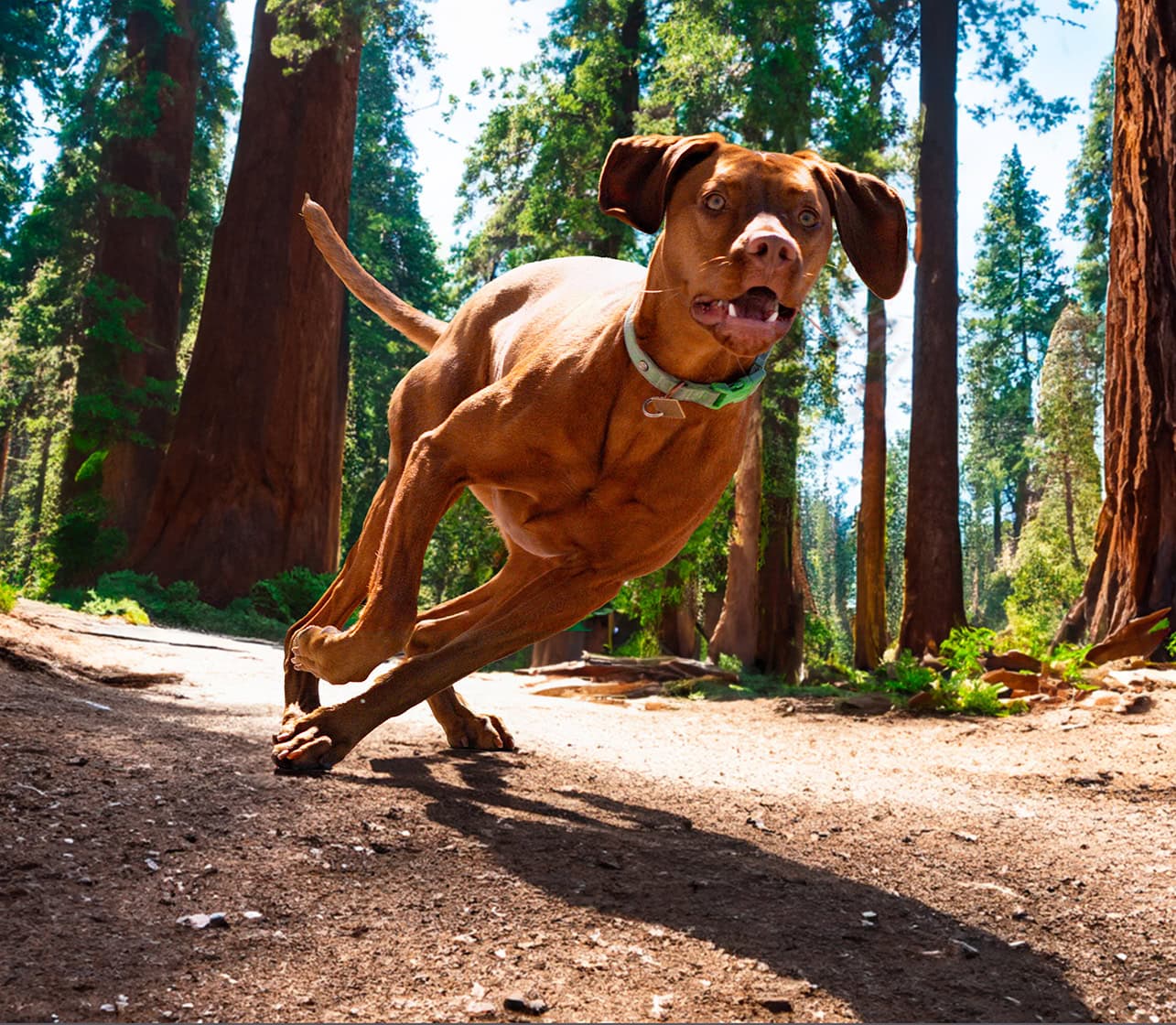
Let me share a recent project that showcases the power of this approach. We were tasked with creating a global campaign for a luxury watch brand. The client wanted to showcase their timepieces in iconic locations around the world, but the budget didn't allow for a world tour.
Using our AI-green screen technique, we photographed the watches in our studio and then generated stunning, photorealistic backgrounds of the Eiffel Tower, the New York skyline, and the beaches of Bali. The result? A visually stunning campaign that looked like a million dollars, without the million-dollar price tag.
